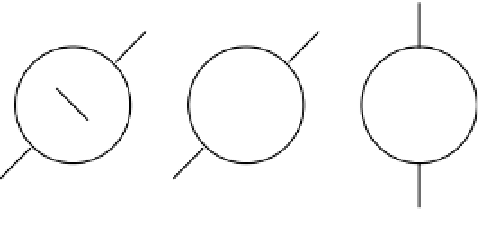Game Development Reference
In-Depth Information
Modeling the Pitch
In the movie
Bull Durham
, Kevin Costner summed up the game of baseball: “You throw the
ball, you hit the ball, you catch the ball.” One of the key elements of the game is that the pitcher,
who stands 18.44
m
(60
ft
6
in
) from home plate, has to throw the baseball in such a way that
either the batter can't hit the ball or he hits it to one of the defenders, who can either catch the
ball or throw him out. The pitcher aims for an imaginary “strike” zone whose boundaries are
the width of the plate (0.43
m
) and the distance between the batter's knees and the lettering
across his jersey.
The two key elements of a baseball pitch are velocity and spin. The pitcher gives the ball an
initial velocity when he releases it towards home plate. The velocity components of the ball are
then affected by the accelerations caused by gravity and aerodynamic drag. The pitcher also
puts a spin on the ball when he throws. Let's discuss in a little more detail how spin affects the
flight of a baseball.
The Effects of Spin on the Flight of a Baseball
From what you have learned about Magnus force, you know that a spinning baseball generates
lift in the direction perpendicular to the velocity vector and spin axis. Spin is critically impor-
tant in baseball because it is what defines the various pitches and allows the ball to move and
curve as it travels to home plate. It doesn't matter how hard you can throw a baseball; if you
throw it straight, batters can hit it.
The spin axis and direction of spin defines the type of a given pitch. The velocity of the ball
and the spin rate will determine the amount of movement experienced by a given pitch. The
spin axis and spin directions for three commonly used baseball pitches are shown in Figure 7-24.
The point of view of Figure 7-24 is that of the pitcher looking towards home plate. The arrows
show the direction of the spin.
Figure 7-24.
Spin dynamics for three types of baseball pitches
In looking at Figure 7-24, we can determine how the pitches will move due to their spin. A
slider is a pitch that spins about the vertical axis. The Magnus force will therefore be in the hori-
zontal direction. The slider shown in Figure 7-24 will break from left to right. The curveball
spins in the downward direction. The Magnus force for the curveball will be downward as well.









